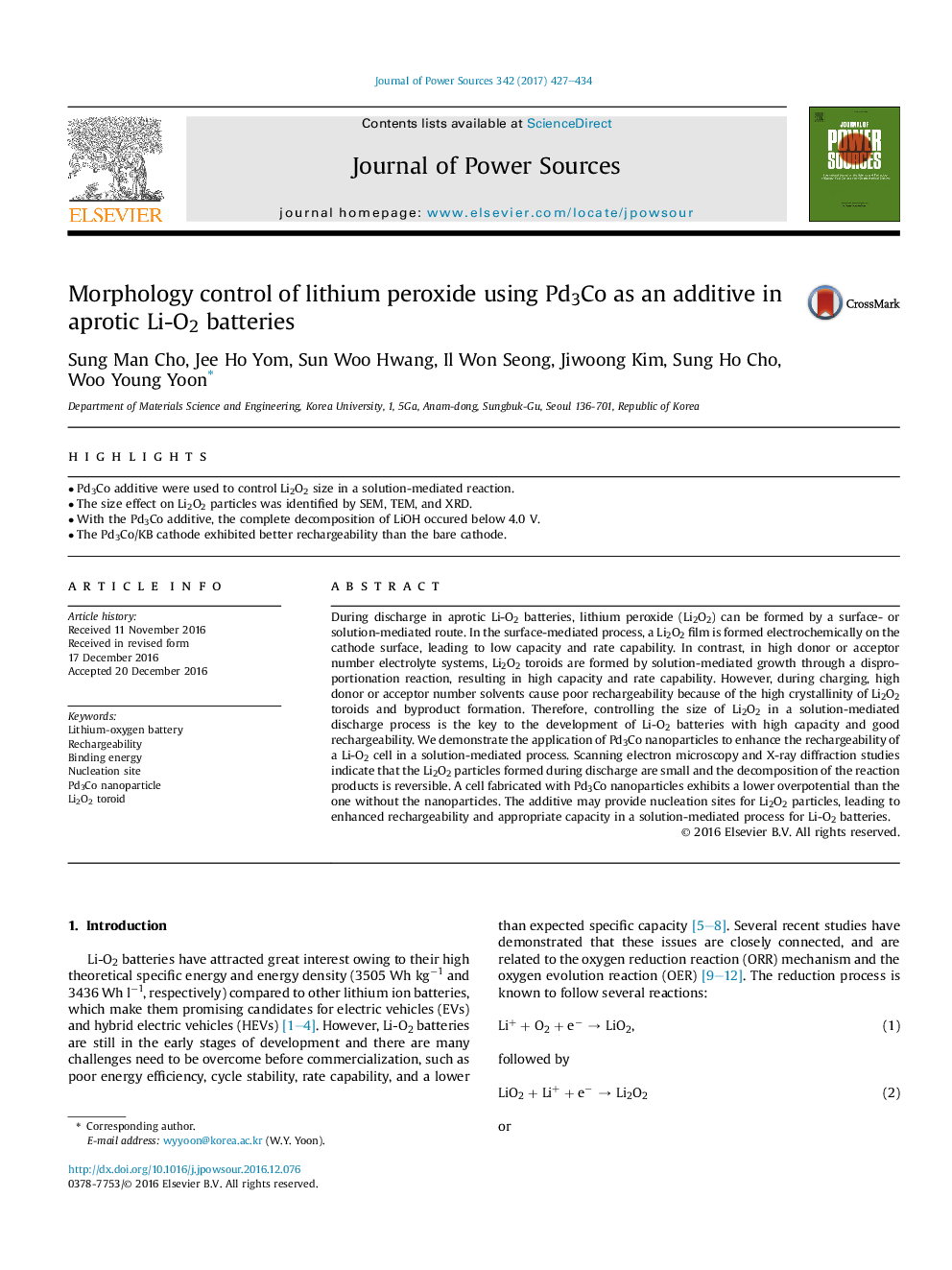| Article ID | Journal | Published Year | Pages | File Type |
|---|---|---|---|---|
| 5149619 | Journal of Power Sources | 2017 | 8 Pages |
Abstract
During discharge in aprotic Li-O2 batteries, lithium peroxide (Li2O2) can be formed by a surface- or solution-mediated route. In the surface-mediated process, a Li2O2 film is formed electrochemically on the cathode surface, leading to low capacity and rate capability. In contrast, in high donor or acceptor number electrolyte systems, Li2O2 toroids are formed by solution-mediated growth through a disproportionation reaction, resulting in high capacity and rate capability. However, during charging, high donor or acceptor number solvents cause poor rechargeability because of the high crystallinity of Li2O2 toroids and byproduct formation. Therefore, controlling the size of Li2O2 in a solution-mediated discharge process is the key to the development of Li-O2 batteries with high capacity and good rechargeability. We demonstrate the application of Pd3Co nanoparticles to enhance the rechargeability of a Li-O2 cell in a solution-mediated process. Scanning electron microscopy and X-ray diffraction studies indicate that the Li2O2 particles formed during discharge are small and the decomposition of the reaction products is reversible. A cell fabricated with Pd3Co nanoparticles exhibits a lower overpotential than the one without the nanoparticles. The additive may provide nucleation sites for Li2O2 particles, leading to enhanced rechargeability and appropriate capacity in a solution-mediated process for Li-O2 batteries.
Related Topics
Physical Sciences and Engineering
Chemistry
Electrochemistry
Authors
Sung Man Cho, Jee Ho Yom, Sun Woo Hwang, Il Won Seong, Jiwoong Kim, Sung Ho Cho, Woo Young Yoon,
